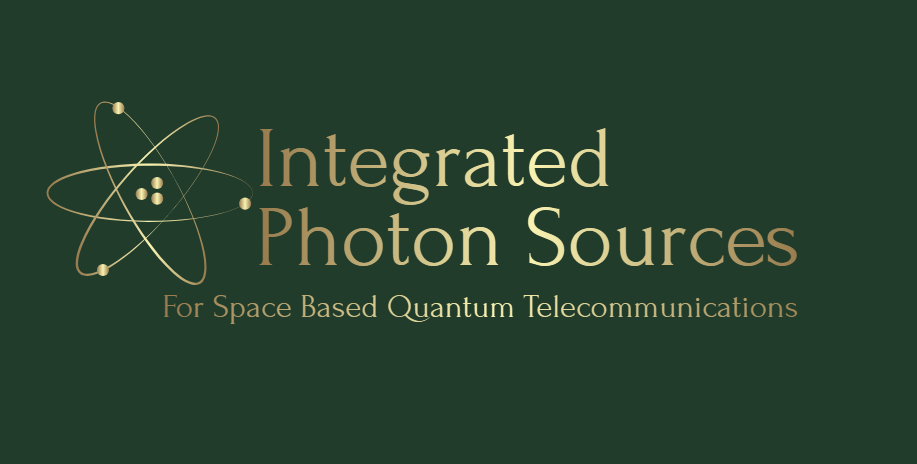
-
StatusOngoing
-
Status date2025-07-14
The project aims to design, specify, and validate compact optical modules critical for spaceborne quantum key distribution (QKD) systems. Key objectives include setting the preliminary design, finalizing technical specifications, confirming the detailed design, and defining relevant environmental conditions for prototype validation and functional testing. The focus lies on developing space-compatible Entangled Photon Sources (EPS) and Faint Pulse Sources (FPS), optimizing for Size, Weight, Power, and Cost (SWaP-C). Particular attention is given to balancing EPS unit size and photon pair brightness by adjusting the length and form of the periodically poled potassium titanyl phosphate (ppKTP) crystal. This approach enables the possibility of using multiple compact EPS units on a single satellite to improve performance and redundancy.
A key challenge of the project lies in ultimate miniaturisation of single photon sources in order to showcase them in practical QKD applications.
The product offers a compact, efficient, and space-qualified solution for QKD systems, addressing the critical need for low-SWaP-C optical modules in spaceborne quantum communication. Unlike many existing QKD demonstrations conducted on the ground, space-to-ground QKD enables significantly lower photon loss, making it the most promising architecture for secure global key exchange. The entangled photon source EPS and FPS developed in this project provide enhanced integration and reliability compared to bulkier, lab-based setups. By focusing on compactness and performance, the product supports scalable, redundant QKD architectures suitable for satellite deployment, filling a gap not addressed by current systems.
The product integrates two core components: the EPS and the FPS, both designed for compact, stable, and high-performance operation in quantum communication systems. The EPS emits high-fidelity entangled photon pairs using a Sagnac interferometer-based spontaneous parametric down-conversion (SPDC) configuration. Its design emphasises compactness, brightness, entanglement fidelity, and stability. It employs commercial off-the-shelf components and a robust optics assembly method presumed suitable for space qualification. The FPS generates single photons across two discrete channels, enabling precise control of timing, and polarization. It uses two pairs of high-repetition-rate laser gain-chips, pulsed via gain-switching, with output cross-coupled and attenuated to single-photon levels. Polarization control is achieved by aligning each diode’s output with the fast or slow axis of polarization-maintaining (PM) fibres. This setup enables flexible and programmable single-photon emission patterns. Integration with a random number generator supports random modulation of timing and polarization. Together, the EPS and FPS modules offer scalable, high-precision photon sources essential for secure and efficient quantum key distribution, while ensuring suitability for compact, spaceborne applications.
The EPS employs a high-power (>100 mW) SLM pump laser at 405 nm and uses periodically poled nonlinear crystals, for efficient spontaneous parametric down-conversion. Robotic manipulators are used to position and bond small optical components (≤3 mm), ensuring precise alignment. Critical to performance are stable thermoelectric cooling (±0.001 K), high-fidelity entanglement generation, and reliable polarization-maintaining fibre coupling with high polarization extinction ratio and angular stability. The FPS utilises compact, switched gain-chips and a common seed to emit pulses at up to 1 GHz with stable amplitude and precise timing. A two-channel switching driver controls emission. Similar robotic optical assembly techniques are applied to align and bond small optical components, ensuring consistent PM fibre coupling. Both modules use commercial off-the-shelf components and robust assembly methods, supporting potential space qualification. The overall architecture reflects a high degree of integration and precision, enabling stable and scalable photon generation for quantum key distribution applications.
The project follows a structured plan divided into key phases: initial requirements analysis, preliminary and detailed design, component procurement and assembly, and functional testing. Major milestones include a meeting to define the characterization strategy, a Preliminary Design Review, a Test Readiness Review, and a Critical Design Review. The project concludes with a final presentation to ESA.
The project has progressed from concept development toward prototype definition. Detailed technical specifications for key components have been initiated based on system requirements. A market survey identified suitable EU-based suppliers, and initial orders have been placed. A literature review of electrical and fluid power systems is ongoing to support design decisions. Risk identification and mitigation planning have also begun.



